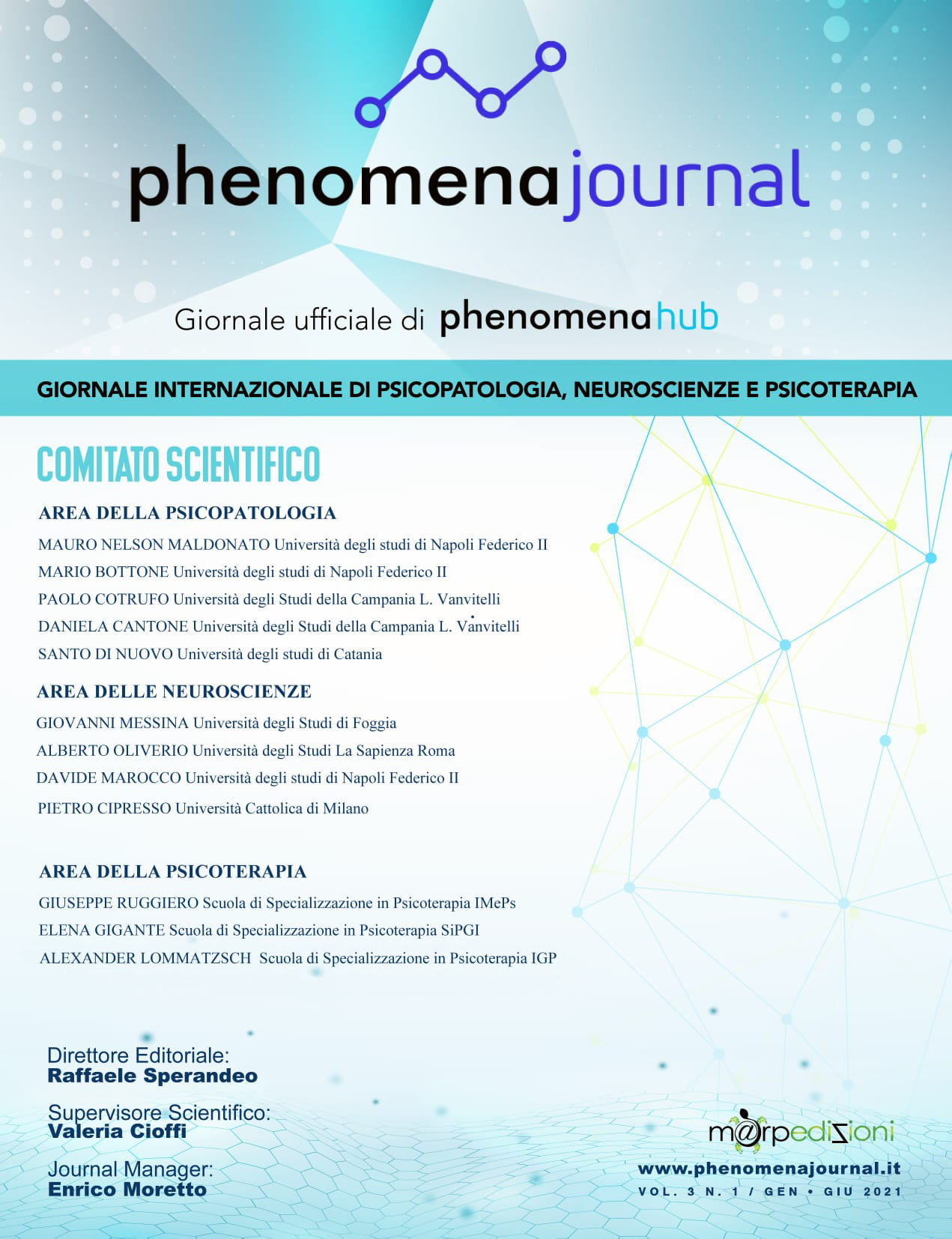Practice of Kindness: Integrated Gestaltic Intervention on the Phenomenon of Bullying
Published 2021-03-11
Keywords
- bullying,
- gestalt,
- intervention
How to Cite
Abstract
Bullying involves many preteens, engraving, sometimes to a considerable extent, on their personal serenity and balance on their relationship. It is a phenomenon that cannot be reduced to the overbearing behavior of a single boy, but has a multidimensional configuration, that involves the whole group in which it occurs, characterized mainly by prevarication dynamics. There are several anti-bullying programs put into action, but none of them uses the integrated Gestalt approach, which I believe may be a significant orientation both for reading the phenomenon and for the intervention of the intra-group dynamics. The postulate is to create a methodological group device that affects the phenomenon, through several specific steps, with the transversal objective of enhancing in all partecipants awareness, responsibility, empathy and self-efficacy. The different steps of intervention are conducted within the relational field, at the border - contact I-you, in which the individual experiences a totality of coexisting phenomena that interact and influence each other: the experiences. Mind-body experience is the knowledge foundation and passes through the different levels of experience. The contact cycle will mark the process's explication times, both inside the specific meeting (intra-cycle), and in the entire path (inter-cycle), in a continuous sequence of backgrounds and figures.
References
- De Pieri, S., & Tonolo, G. (1990). Preadolescenza. Le crescite nascoste
- Gredler, G. R. (2003). Olweus, D.(1993). Bullying at school: What we know and what we can do. Malden, MA: Blackwell Publishing, 140 pp., $25.00. Psychology in the Schools, 40(6), 699- 700.
- Menesini, E., Fonzi, A., & Caprara, G. V. (2007). Il bullismo a scuola: vecchie e nuove tipologie. AA. VV, 8.
- Marini, F., & Mameli, C. (2005). Bullismo e adolescenza. Psicologia e Giustizia, 6(1)
- Caravita, S. C. S. (2004). L'alunno prepotente. Conoscere e contrastare il bullismo nella scuola. La scuola
- Baldry, A. C., & Farrington, D. P. (2005). Protective factors as moderators of risk factors in adolescence bullying. Social psychology of education, 8(3), 263-284
- Sapouna, M. (2008). Bullying in Greek primary and secondary schools. School Psychology International, 29(2), 199-213.
- Volpato, C. (2013). Negare l’altro. La deumanizzazione e le sue forme. Psicoterapia e Scienze umane
- Formella, Z., & Ricci, A. (Eds.). (2010). Bullismo e dintorni. Le relazioni disagiate nella scuola: Le relazioni disagiate nella scuola. Franco Angeli
- Formazione in psicoterapia, counselling, fenomenologia 1° sem. 10° anno n. 19 gennaio - giugno 2012 - la forma che emerge dal confronto - Atti del Convegno Trieste 9 - 10 Giugno 2012
- Oaklander, V. (1999). Il gioco che guarisce: la psicoterapia della Gestalt con bambini e adolescenti. EPC
- Perls, F., Hefferline, R. F., & Goodman, P. (1971). Teoria e pratica della terapia della Gestalt. Astrolabio, Roma
- I livelli dell’esperienza, innovazioni e sviluppi, SIG, Roma, 2008
- Kepner James, J., & Spagnuolo Lobb, M. (2015). Body Process. Il lavoro con il corpo in psicoterapia
- Ginger, S., & Ginger, A. (2004). La Gestalt. Terapia del «con-tatto» emotivo. Edizioni Mediterranee

